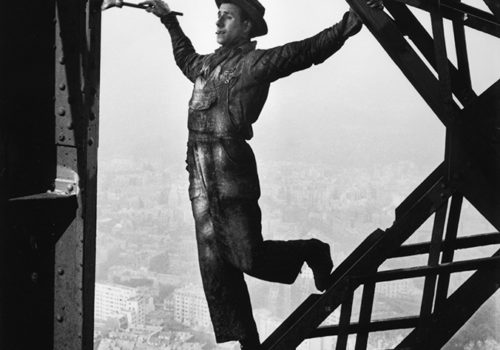At 91 years old, Marc Riboud is one of the last giants of photography. Who doesn’t know his 1961 photograph of a young woman in Washington holding out a flower to a soldier’s bayonet? The image epitomizes the protest of young Americans against the Vietnam war. Even today it remains one of the most famous photographs in the world. Lyon, Riboud’s hometown, is currently paying him tribute with the exhibition Premiers déclics at Le Plateau, the exhibition space of the regional council, through February 21st, 2015.
The show sheds a tender light on the photographer’s early year. Riboud’s story with photography began when his father gave him an old Vest Pocket Kodak, in an effort to help his son open up. The fifth of seven children, he was terribly shy, almost mute.
His father’s intuition was right. The camera became an extension of young Riboud. From his very first photographs, Riboud meticulously composed his photographs; his penchant for geometry would become his trademark. But it was a meeting with Henri Cartier-Bresson, a friend of his brother’s, who set Riboud on the path to becoming a professional photographer. After his famous photograph “Le peintre funambule de la tour Eiffel” appeared in LIFE magazine in 1953, Riboud joined the prestigious Magnum agency.
To set himself apart from his two mentors, Capa and Cartier-Bresson, Riboud left Paris, traveling throughout Europe and China. The exhibition explores these early journeys, which show signs both of ingenuity and the anxiety of experiencing a new world.
Read the full article on the French version of L’Oeil.
EXHIBITION
Marc Riboud, Premiers Déclics
Through February 21st 2014
Le Plateau
1 esplanade François Mitterrand
69269 Lyon
France
















